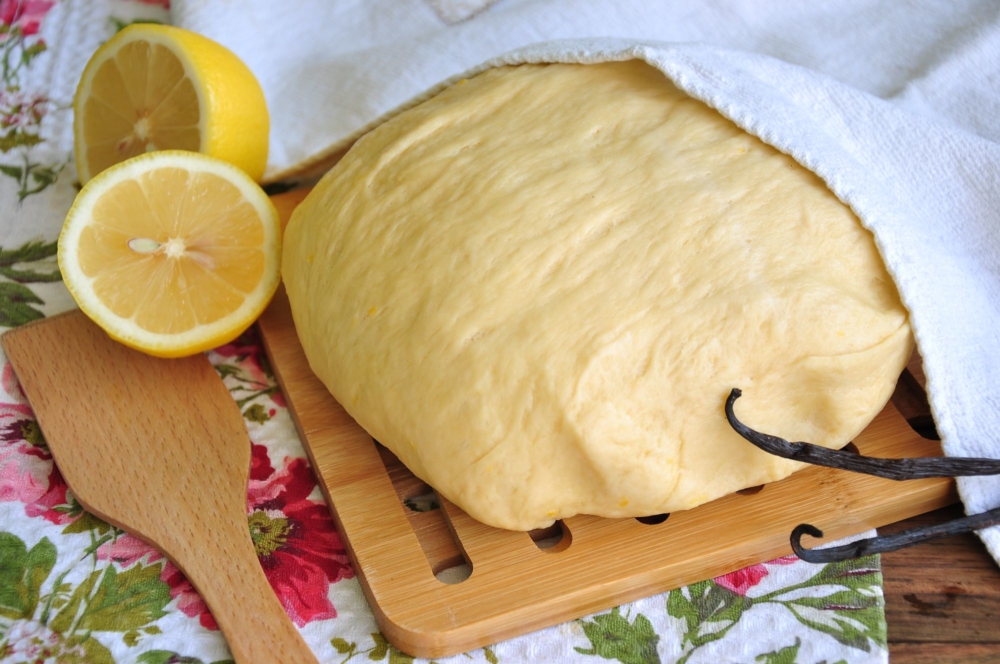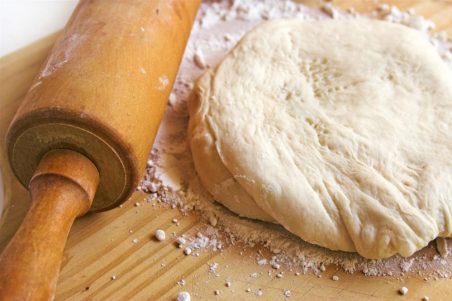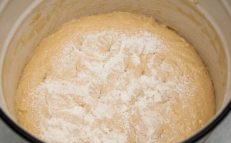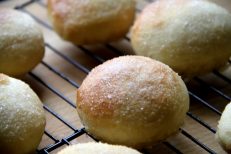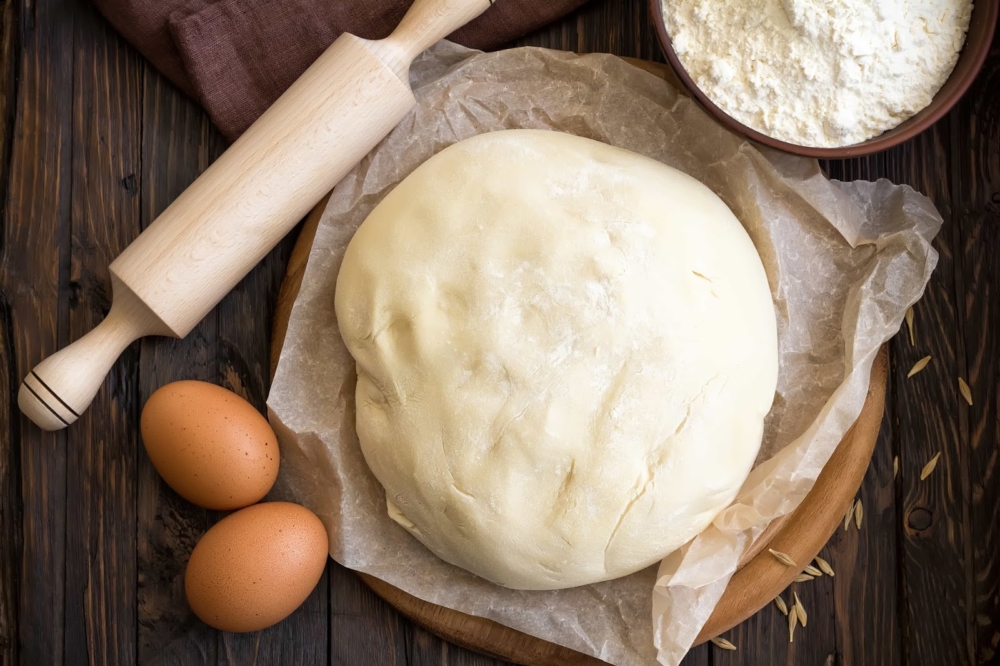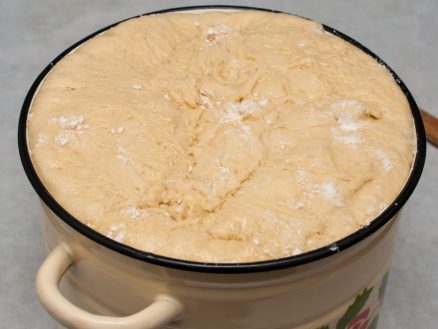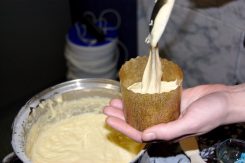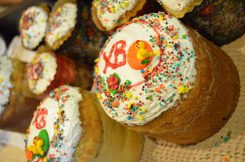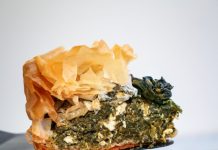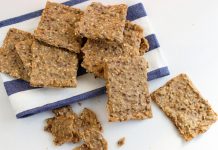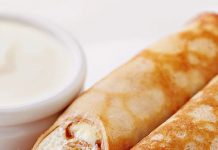Viennese dough has a special place among the many recipe options for yeast muffin. All professional and home cooks celebrate his special qualities and taste, offering their own kneading options. It is suitable for baking pies, rolls, rolls and even Easter cakes. Viennese dough products do not stale for a long time and remain lush.
Material Content:
Classic recipe for all types of baking.
The classic composition of Viennese dough is distinguished by the indispensable presence of sour cream, vanilla sugar and margarine. The classic recipe also has two options - many hours and fast. It is worth trying both the first and second!
To prepare the dough for a long batch, you will need:
- flour - how much will go (it is better to have about 3 kg at home);
- milk - 1 l;
- baking margarine - 150 g;
- sour cream (preferably from 20%) - 0.5 l;
- eggs - 10 pcs.;
- yeast - 75 g of briquettes;
- sugar - 500 g;
- salt - as they used to.
Process:
- In half a glass of milk, dilute a little less than half the yeast and 2 tsp. granulated sugar, salt. Stir well. The mixture should stand for 15 minutes warm.
- Heat the rest of the milk (do not boil) and add margarine, sour cream, sugar and eggs.
- After 15 minutes, mix both mixtures. Add a little to the flour, you need to achieve the consistency of thick sour cream.
- The mixed dough should rise 2 times. After the first rise, it should be mixed again and wait.
- When the second rise of the dough occurs, you need to add more flour to it (how much will go) and knead the dough. Knead it should be a very long time. The longer, the more tender and magnificent the baking will be.
- When the batch becomes elastic, smooth and lush, it needs to be covered, left warm. This stage is also quite lengthy.
- The risen dough needs to be kneaded and left to rise again.
- Kneading should increase in size almost twice.Now you can cut pieces from the dough and form baking.
- Next, the products should be placed on a dusty flour surface and let them distance for approximately 20-30 minutes.
The temperature of the oven is approximately 180 degrees. Time is best determined individually.
The second way to make Viennese yeast dough is quick. The following products will be needed:
- flour - 1.5 kg;
- sugar - 700 g;
- eggs - 4-5 pcs.;
- sour cream - 1 tbsp .;
- baking margarine - ½ standard pack;
- milk - 1 l;
- yeast - 50 g.
Process:
- Warm approximately 0.5 tbsp. milk and put yeast, 2 tsp. sugar, 60 g flour. Remove into heat and wait until a foamy “cap” appears.
- During this time, beat the eggs with sugar until foam, add the melted margarine, the rest of the milk (warm) and sour cream. After 25 minutes, combine both mixtures.
- Add the flour, knead the dough (for a long time) and let it rise for 45 minutes.
- When it comes up, knead again (also for a long time and thoroughly), and then immediately form the products.
- Subsequent actions - according to the first scheme. Products should stand for 20-30 minutes, and then they can be sent to a preheated oven. Bake to a beautiful golden crust.
All components for the manufacture of Viennese dough must be removed from the refrigerator 1-2 hours before work. In addition to milk - it is heated immediately before the process.
Viennese pastry dough in the oven
One variation is made on granular yeast. This method of making Viennese pastry for pies in the oven is relatively quick, and the pastries are tasty and beautiful.
Structure:
- flour - 420 g (you can add, it all depends on the quality of the product);
- sour cream - 1.5 tbsp. l .;
- milk - a little more than ½ tbsp .;
- yeast - 5 g;
- butter - 50 g (or margarine);
- eggs - 2 pcs.;
- salt - at the discretion;
- sugar - 3 tbsp. l
Cooking:
- Connect 1/3 Art. heated (30 degrees) milk, 1 tsp. sugar, yeast. Put closer to heat. Wait until active foam appears.
- Make a mixture of butter, unspent milk, eggs, salt and sour cream whipped with sugar.
- Combine both mixtures and add flour a little, kneading sticky soft dough. Knead it for a long time, with well-soaked hands in vegetable oil. When the dough is ready, it will no longer remain on the fingers, but will remain soft.
- In a warm place, the batch should rise about 3 times (in an hour and a half). Lash and stir it every half hour. Then you can form pies and fill them with any filling.
The oven is better in a preheated oven (about 180 degrees). Willingness - browned crust.
Cooking for buns
Viennese pastry buns are simply luxurious! They are delicious with warm milk and cocoa, with aromatic tea or freshly brewed coffee.
They are prepared from the following ingredients:
- wheat flour - 750 g;
- eggs - 5 pcs. + 1 pc. for lubrication;
- margarine (butter or spread) - 100 g;
- yeast - 25 g (pressed);
- warmed milk (up to 30 degrees) - 500 ml;
- sour cream (from 20%) - 100 g;
- refined sugar - 1 tbsp .;
- olive oil - 1 ½ tsp (for greasing hands);
- zest - with 6 oranges;
- powdered sugar - for sprinkling;
- vanilla - according to the mood.
Process:
- In a quarter of the prepared milk, dissolve 1 tbsp. l sand, yeast, 2-3 tbsp. l flour is the composition of dough. Shake, cover with a breathing cloth and remove where it is warmer for 30 minutes.
- After the specified time has elapsed, add sour cream, butter (spread / margarine), the rest of the milk, beaten eggs with sugar and mix again.
- Add flour and vanilla. Knead for a long time, greasing hands with olive oil.
- Cover the batch and leave again for 1 hour.
- Then knead and set to rise for another 0.5 hours.
- Peel the skins of oranges from the white part and finely chop into dough.
- Knead, distributing the slices evenly throughout the mass and immediately proceed to the formation of buns.
- Lay the finished products on a sheet covered with parchment, allow them to distance for about half an hour. Before installing in the oven, grease with an egg.
- Bake first at high temperature (about 10 minutes).Then reduce the heat a little and bake to a golden hue.
- Cool under a breathable cloth. Sprinkle with powdered sugar and use with pleasure.
The orange accent of the Viennese pastry dough for buns combined with hot coffee is unique!
How to make for Easter cakes
Easter cakes from Viennese dough turn out to be unusually tender, "holey", but not dry. In addition, they remain fresh and soft for a long time.
We prepare from the following components:
- granulated sugar - 1 kg;
- eggs - 12 pcs.;
- butter - 120 g;
- briquette yeast - 100 g;
- warm milk - 1 liter;
- flour - 3 kg;
- salt - 2 tsp;
- vanilla sugar - 2 tsp. (more is possible);
- dried fruit / candied fruit - 300 g (optional).
How to do:
- It’s worth starting work in the evening, because the dough should stand for the night. Pour the yeast with milk, having previously dissolved in it 1 tbsp. l Sahara. Set aside for 15 minutes.
- Beat eggs with the rest of the sugar until a white froth. It is better to do this with a mixer, rather than manually.
- Shake the melted butter thoroughly with the egg-sugar mixture and dough.
- Cover and leave where warmer for the night.
- Pour vanilla sugar or vanilla and salt in the morning. Mix.
- Report flour by kneading a smooth and non-sticky dough.
- Add prepared dried fruits and / or candied fruits (dry).
- Knead again. The longer the better.
- Spread the batch in the molds for cakes, greased with vegetable oil (do not grease paper ones). Fill only 1/3.
- Allow to distance. The test readiness signal is a noticeable increase in volume.
Cakes are baked in a preheated oven. It should be hot - about 200 degrees. Time is best determined by the characteristics of your stove.
Glaze (choice according to personal preference) is applied to products hot.
Cooking technology from Olga Shobutinskaya
A wonderful Viennese pastry for pies is obtained according to the recipe of Olga Shobutinskaya. Pastries prepared on the advice of this culinary blogger, it turns out lush and fragrant. This pastry seems freshly prepared even the next day, and it looks very beautiful!
They make dough from these products:
- yeast - 18 g of briquette or 6 g of dry;
- sugar - 120 g + 4 tbsp. l for roasting apples;
- vanilla sugar - 8 g;
- butter - 100 g + 1 tbsp. l for roasting apples;
- milk - 270 ml;
- flour - 600 g;
- eggs - 3 pcs. (1 of them for lubrication);
- salt - ½ tsp;
- zest of lemon and cinnamon - to taste;
- apples - 1.3 kg.
Cooking:
- Pour crushed yeast into half a serving of milk, 1 tbsp. l granulated sugar and 4 tbsp. l flour (sifted). Cover with cling film and put in heat until a foamy “cap” appears (1-2 hours).
- Combine unspent sugar with vanilla, add salt and 2 eggs, beat with a whisk.
- Combine the risen dough, the egg mixture and the second half of the milk (warm).
- Insert molten butter last. Olga prefers to add also lemon zest, although she emphasizes that this is a matter of taste.
- Next, you need to introduce the sifted flour into the mass and knead the sticky dough. It acquires the desired uniformity, fills with air and becomes less sticky after 10 or 15 minutes of kneading.
- Cover the kneading with food polyethylene and place in a warm place for 2 or 3 hours. In the process of lifting, knead the batch about once every 40 minutes.
- Cut peeled apples into small pieces.
- Fry over high heat in butter mixed with sugar. The apples should be a little softer, but crackle a little when bitten.
- Drain apple juice from the pan through a sieve. Put the fruits to cool.
- Knead the finished dough and divide into 20-23 parts. Leave to rise on a chopped-up flour cutting surface for 10 or 15 minutes under the film.
- Mix the cooled apples with cinnamon.
- Stretch the raised workpieces into a cake, fill with the filling and form pies.
- Lay the product on parchment baking sheet “seam” down and grease with an egg. Allow to stand for about an hour.
Bake 30-35 minutes until light brown. The temperature is 180 degrees.
Cool baked pasties directly on a sheet or on a wire rack.
Some experts believe that Viennese dough should not be baked at temperatures above 180 degrees. And in the middle of the process, they even recommend reducing it to 150 degrees. However, the parameters for each oven are best chosen individually.
Viennese dough is suitable for all types of baking. The expended efforts and time are paid off with such a pleasant gastronomic experience that after only a couple of days there is a desire to do it again. Try it yourself!


